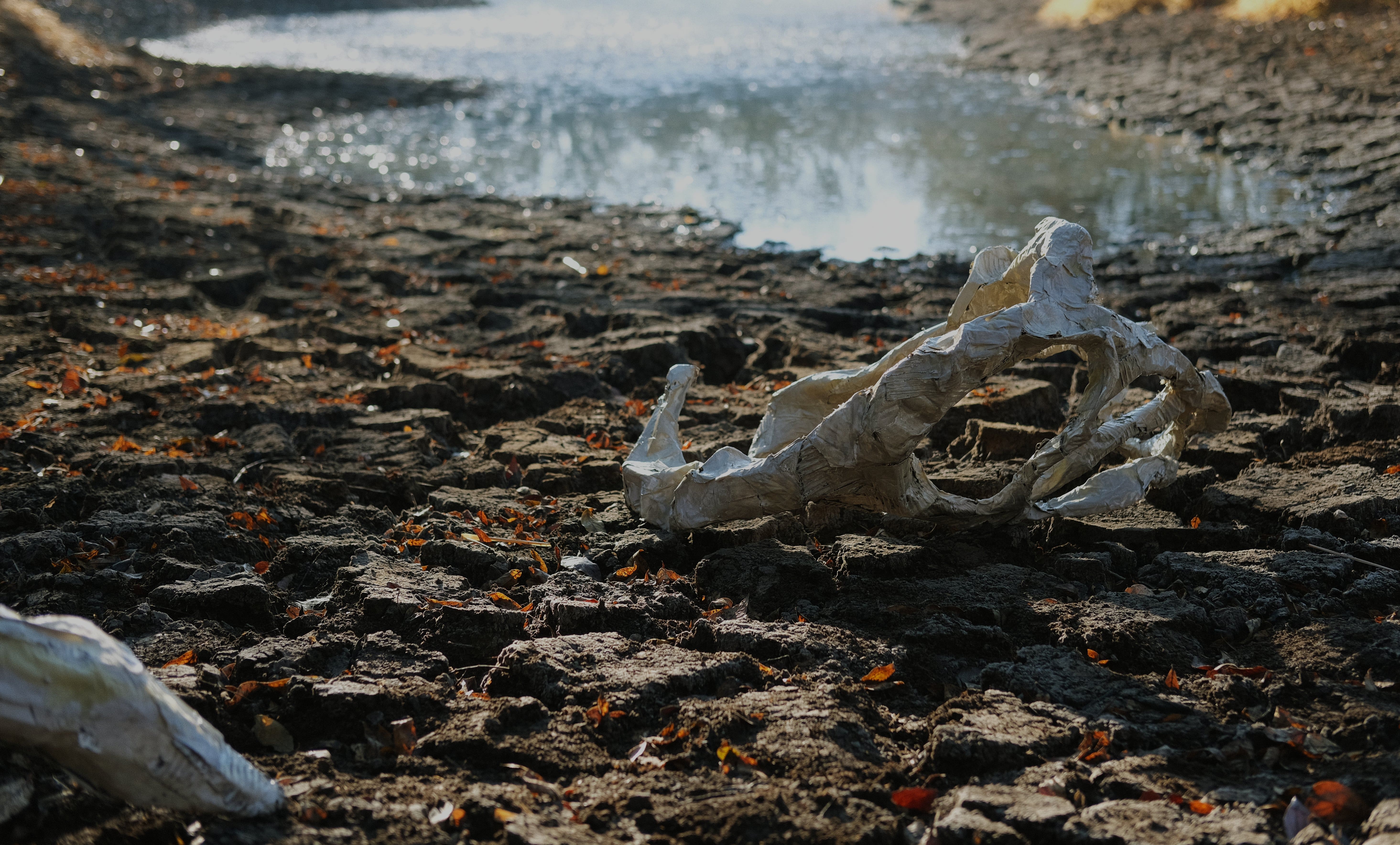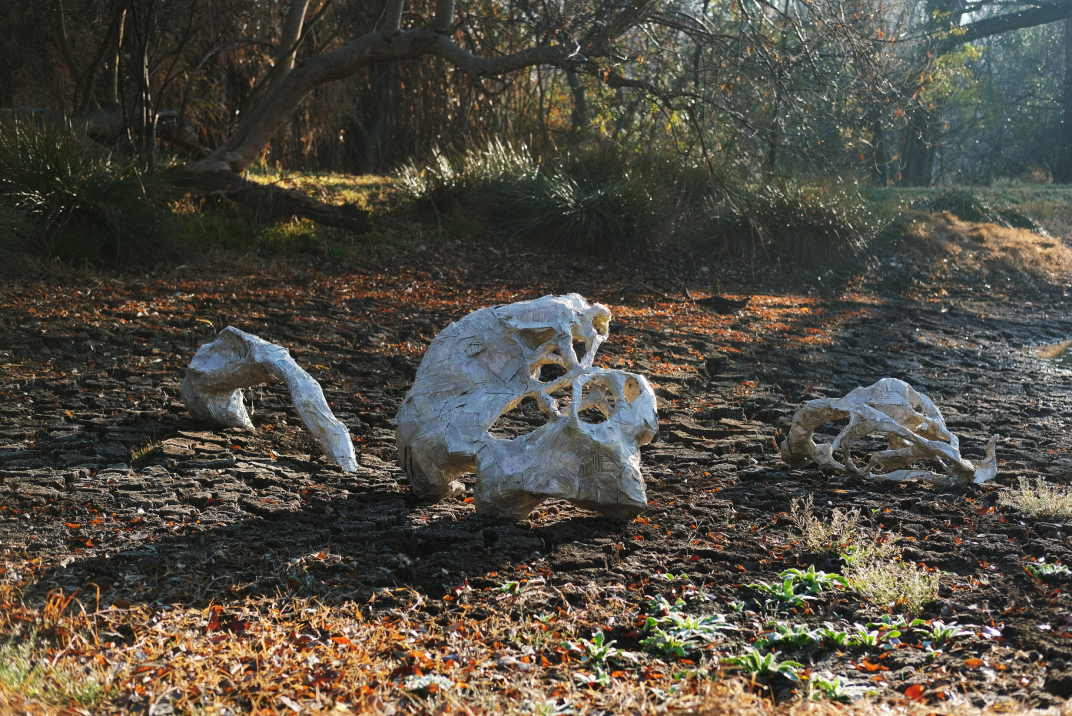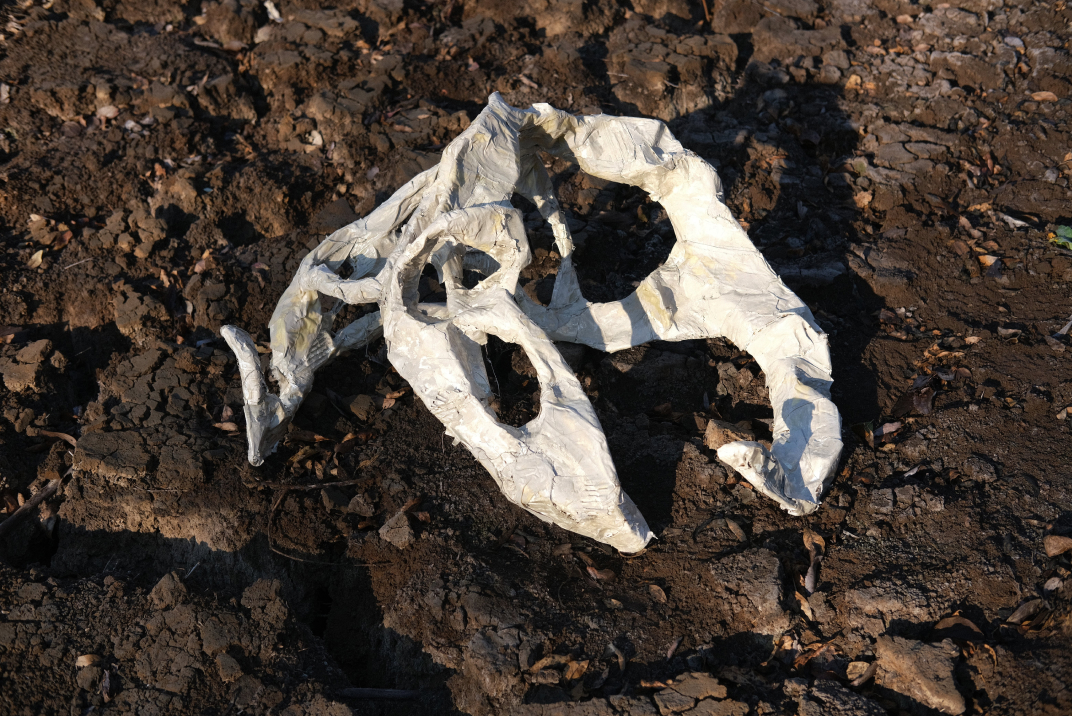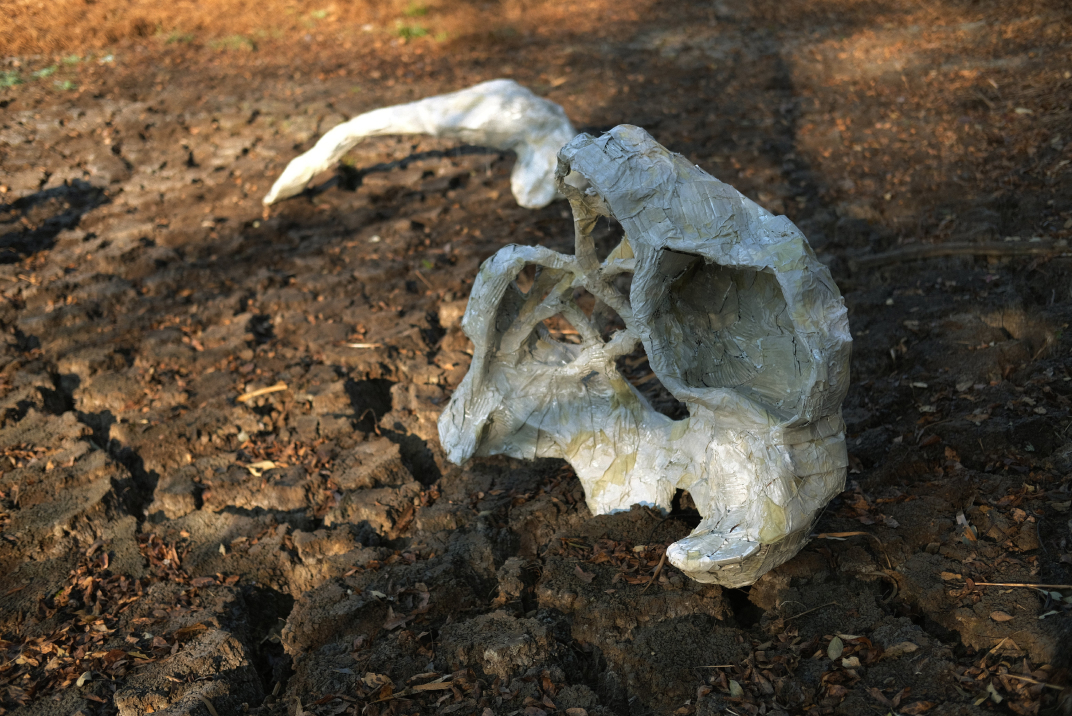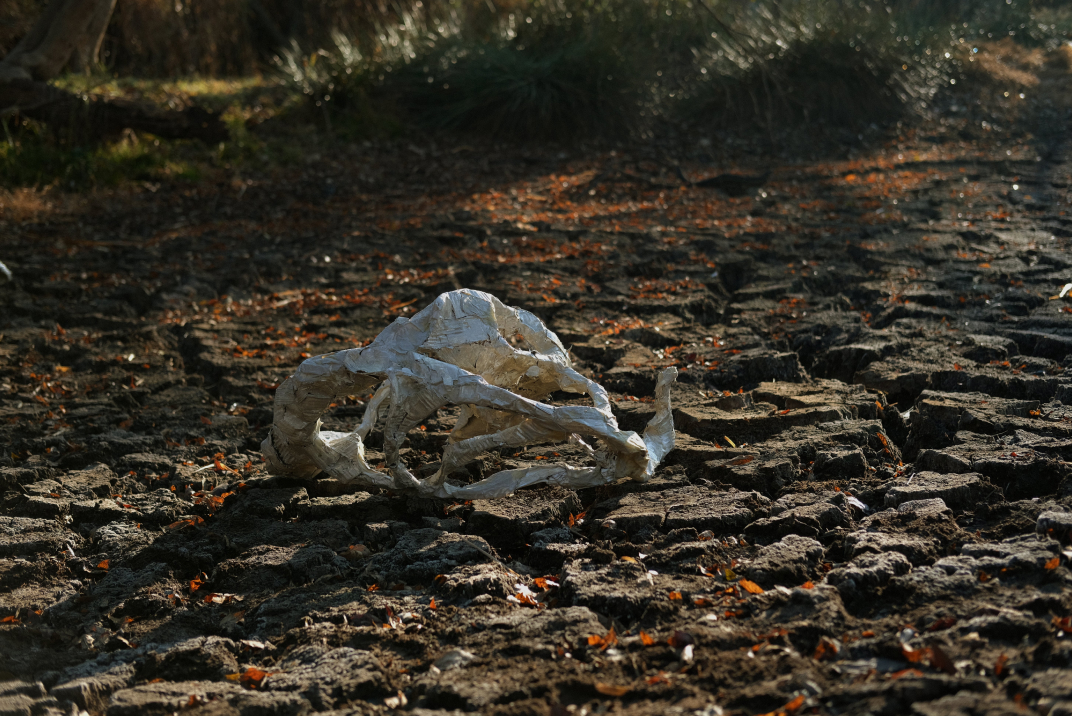The projects explores the transformation and disappearance of a small river in artist's hometown in southern Ukraine. For decades, this waterway sustained local biodiversity, agriculture, and community life, with the town itself named after the river. Fed by rainfall and releases from the Kakhovka Reservoir, it was both an ecological and social landmark.
The river began to dry up in the early 2010s, eventually vanishing entirely. Its absence brought partial ecological collapse, declining farms, and the loss of a natural refuge from summer heat. In 2022, under Russian occupation, the river was abruptly refilled without clearing its overgrown bed. A new ecosystem, developed over a decade, was suddenly submerged by water from the Kakhovka Reservoir. In 2023, the destruction of the Kakhovka Dam triggered an environmental catastrophe. Largely due to this, by 2024, the riverbed of the local river was once again dry, littered with fish bones and shells.
Although small in scale compared to the dam disaster, the river’s repeated disappearance reflects broader processes of human interference and biodiversity loss. The work reimagines the river’s final, personally unseen by artist transformation — drawing on testimonies from residents who witnessed the brief return of water, fish, and wildlife during occupation.
Through sculptural and installation-based forms, the project presents imagined aquatic creatures now stranded at the river’s bottom: skeletal remains and fragmented shells of bizarre creatures. These fictional fossils merge memory and speculative natural history of a vanished ecosystem.
Work was created during artist residency at NIROX / the Kromdraai Impact Hub as part of the EXTER programme of the Ukrainian Institute in July 2025.
